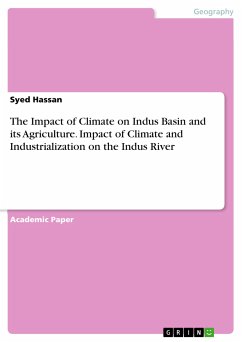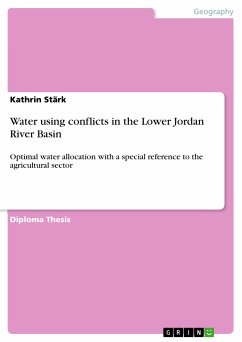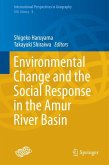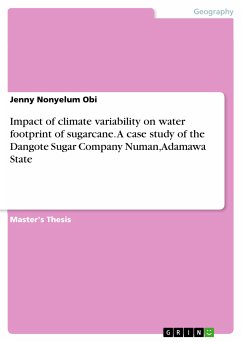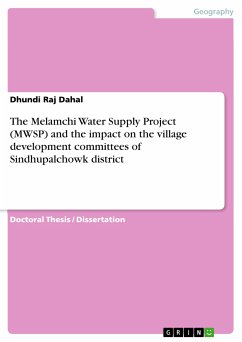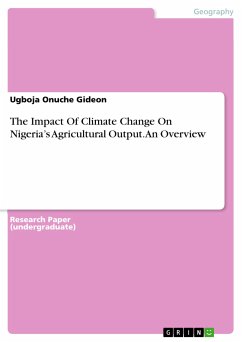Academic Paper from the year 2023 in the subject Geography / Earth Science - Physical Geography, Geomorphology, Environmental Studies, grade: 3.3, Federal Urdu University (University of Karachi), course: Environmental Science, language: English, abstract: This study came at a critical time in the area. The feeble seasonal monsoon of 2009 caused a deficiency across the Pakistan. This comes after many rural households were already in dire straits facing high fertilizer charges and the impact of increasing world food prices. To aggravate the matters, the calamitous monsoon floods of 2010 overblown more than 22 million people, their homelands, structure and harvests. It has been estimated that this single flood caused around US$10 billion in damage, about partial of which was due to fatalities in the agricultural division. Introduction: The Indus Basin has a long and lively history of growth and alteration in irrigation. The settlements of the Harappan evolution in the Indus Valley date back five millennia. During the monsoon season, traces of flood channels remain that cut through the floodplains and allowed the inundation of agricultural fuel, food and minor crops within the riparian corridor. One of the largest dams, the so-called Gabarbands, dam water in torrents and branch catchment areas. Urban toilets and manure systems which aided cities such as Mohenjo-Daro in the Pakistan, Sindh's lower Indus River section. such smaller cities and were discovered in the 2nd millennium BC. Abandoned due to overflowing of river, salinization, and changes in riverbeds. In a large drainage basin east central Indus valley, the Ghaggar-Hakra river canal changed development during the changes due to river in Harappan era, resulting in the desertion of hundreds of settlements. Such past events raise inquiries about continual sustainability in the setting of lively hydroclimatic unpredictability. Pakistan gets most of its water from monsoon runoff, aquifers and the headwaters of glaciers and snowfields from the rivers of the Indus Basin. In the Hindu Kush-Karakorum Mountain region areas of the Himalayas, 50 to 80 percent of the average Indus flow is due to snow and glacial melt, with the remainder due to monsoonal rains on the plains. Climate transformation may result in increased unpredictability in the supply and effectiveness of snowfall, as well as variations in snow and ice melt, which would affect water resource managing in the basin.
Dieser Download kann aus rechtlichen Gründen nur mit Rechnungsadresse in A, B, BG, CY, CZ, D, DK, EW, E, FIN, F, GR, HR, H, IRL, I, LT, L, LR, M, NL, PL, P, R, S, SLO, SK ausgeliefert werden.

